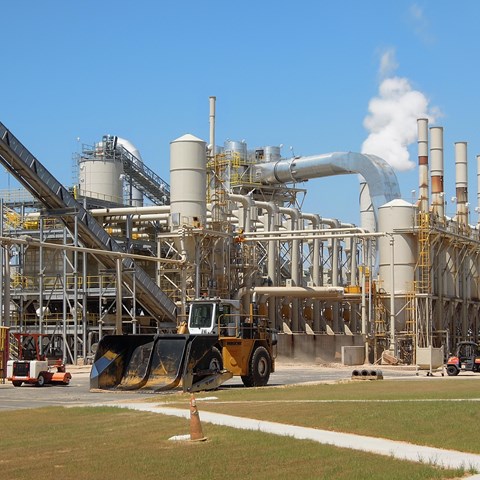NY Times report on the thriving pellets industry in Southeast USA. A source for rural climate-friendly jobs for some, a polluter and destroyer of nature for others. The piece draws on information from a study headed by SLU researcher Francisco X. Aguilar. The study shows that trees close to the pellet mills had more carbon stored in trees than elsewhere. However, the study also shows potential trends of fewer standing dead trees and loss of carbon in the soil of forest near mills.
The NY Times takes a comprehensive look at the booming wood pellets industry in Southeastern USA in an article published April 19th, 2021. Different perspectives reflect on some conflicting impacts, from the neighbor whose sleep is disturbed by the mill, the professionals worried about ecological consequences, to industry representatives. Much of scientific basis for this piece is a study led by Professor Francisco X. Aguilar at the Swedish University of Agricultural Sciences. The study highlights both positive and negative effects of the wood pellets industry. Commercial forest near pellet mills in the Southeast US had more carbon stored in the harvestable trees than forests elsewhere. However, the study also revealed trends towards fewer standing deed trees and losses of carbon from the forest soil near pellet mills that can have negative consequences if these were to continue.
Not everyone is off the hook
”Even if the Southeast’s forest carbon is increasing, “it doesn’t mean everyone is off the hook,” said Francisco X. Aguilar, a forest researcher at the Swedish University of Agricultural Sciences in Umea, who led the recent study. His data revealed potentially concerning trends, including fewer standing dead trees and losses of carbon from the soil of forests near mills in the Southeast, suggesting the pellet industry may be taking wood that otherwise would have decomposed on site, feeding the soil.” New York Times "Increased carbon stock despite pressure on biomass extraction" published April 19th, 2021.
Learn more about the study in an earlier SLU news item: Increased carbon stock despite pressure on biomass extraction
The booming industry is partly down to the EU rule that biofuels are seen as carbon neutral. A proposition questioned in both Europe and USA.
“Many scientists have long been skeptical of biomass’s climate benefits. Wood releases more carbon dioxide per unit of electricity produced than coal or gas, and a newly planted tree can take decades to reabsorb the carbon dioxide emitted by burning. “Wood is a sucky fuel,” said Tim Searchinger, a researcher at Princeton.” New York Times "Increased carbon stock despite pressure on biomass extraction" published April 19th, 2021.
